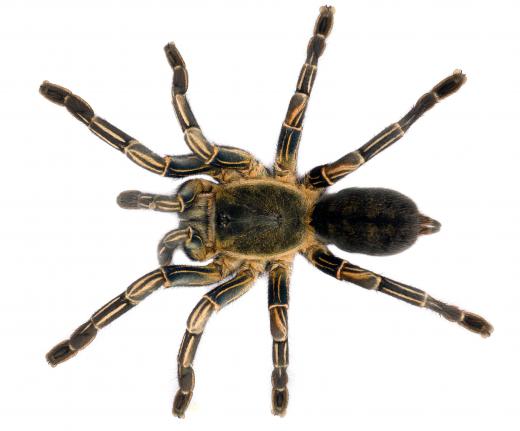What are the Ecdysozoa?
 Michael Anissimov
Michael Anissimov
Ecdysozoa is a proposed super-grouping of eight animal phyla (out of approximately 37) -- Arthropoda, Onychophora, Tardigrada, Kinorhyncha, Priapulida, Loricifera, Nematoda and Nematomorpha. It is a controversial grouping, but a large genetic study in Nature in 2008, "Broad phylogenomic sampling improves resolution of the animal tree of life," strongly supported the Ecdysozoa as a natural category. The group was originally proposed as the result of genetic studies using 18S ribosomal RNA genes in 1997.
The primary characteristic the Ecdysozoa share is the molting of a three-layered cuticle in a process called ecdysis (from whence the group gets its name). Another shared feature is the absence of locomotory cilia in reproductive cells -- the sperm are amoeboid. Ecdysozoa embryos do not undergo spiral cleavage, while other protostome embryos do. The Ecdysozoa are all protostomes, one of the two major groups of animals, the other being deuterostomes.

Ecdysozoa is a proposed superphylum within Bilateria, an unranked subregnum (subkingdom) within animals in general. Its largest group is the arthropods, which includes all insects, crustaceans, and arachnids, and is estimated of including a total of 5-8 million species, the majority of all animal life. The Ecdysozoa are the most numerous and prolific organisms on the planet, and their combined biomass exceeds that of all seven billion or so humans.
The Ecdysozoa includes what were some of the earliest forms of life to evolve hard shells, such as the arthropod trilobites, whose emergence defines the start of the Cambrian period, 542 million years ago, and the first forms of life to venture onto the land. The earliest land animal fossil, Pneumodesmus newmani, a 1-cm millipede, is a member of Ecdysozoa. It is likely that nematodes, which cover the abyssal plains of the oceans and are the most numerous multicellular life form on Earth, were actually the first on land, but they don't fossilize well.
Ironically, the cuticle of nematodes have a different chemical composition than all the other Ecdysozoa, so their membership within the group is also the most suspect. One microscopic member of Ecdysozoa, the tardigrades, are notable for being able to withstand extreme temperatures and radiation that would kill a human hundreds of times over. They are the only animal that could survive the rigors of outer space for any significant length of time.
AS FEATURED ON:
AS FEATURED ON:











Discuss this Article
Post your comments